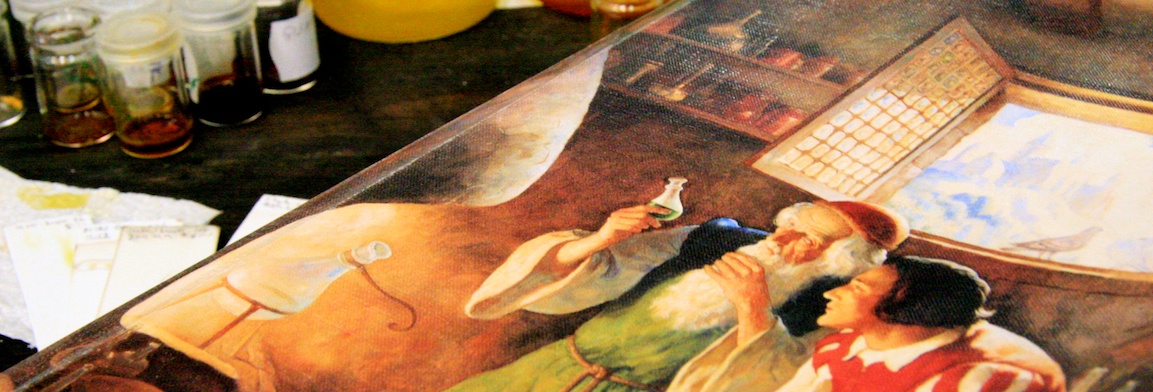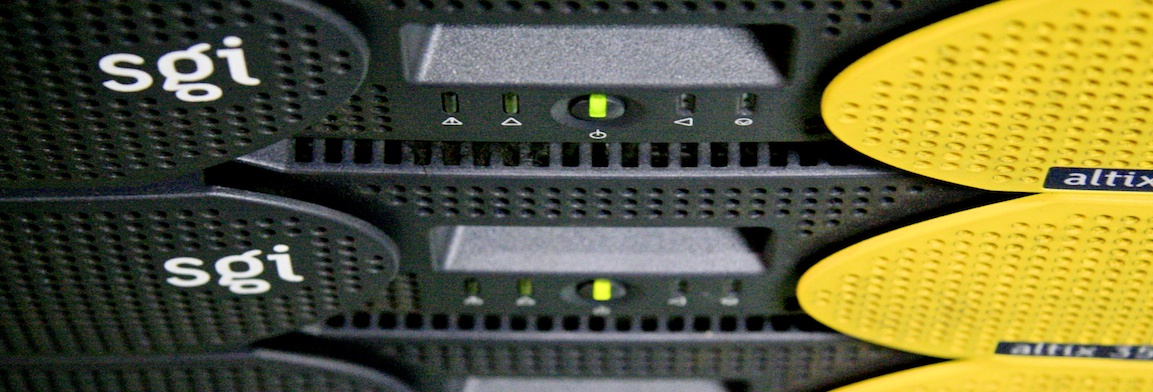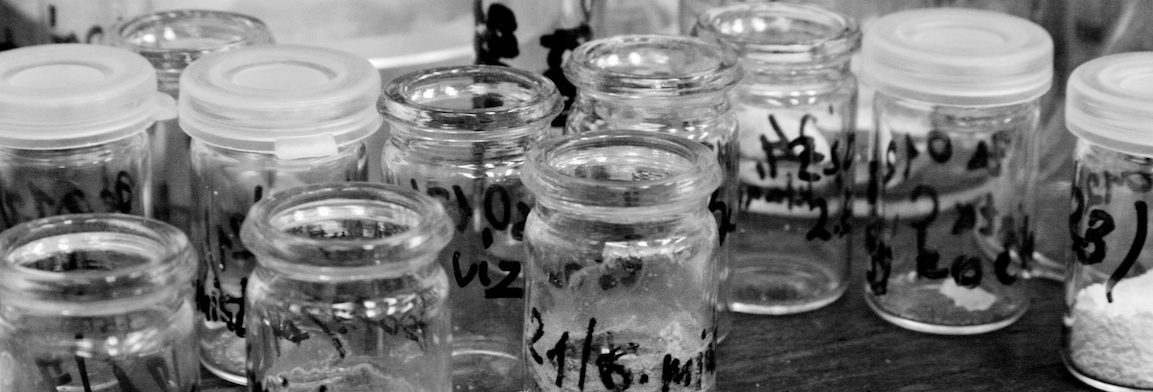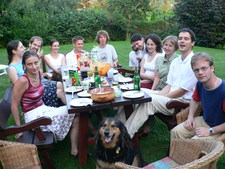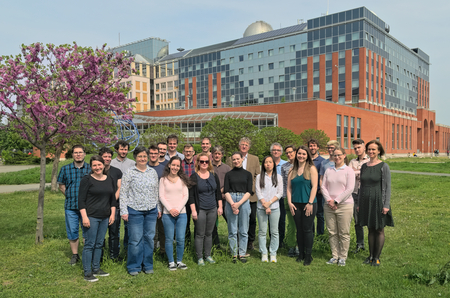
The HUN-REN - ELTE Protein Modelling Research Group and the Structural Chemistry and Biology Laboratory are located at the Institute of Chemistry, Faculty of Natural Sciences, Eötvös Loránd University. We collaborate with many national and international structural research groups in various fields of organic- and peptide-chemistry, molecular biology and biochemistry to better understand the wonderful but hidden world of the microcosm. We operate and develop a synthetic platform including a system for the synthesis of polypeptides and protein domains based on flow chemistry, and a fermentor reactor for the production of partially unlabelled and partially 15N-and 13C-isotopically labelled proteins.
Our topics include spatially oriented projects such as foldamer research, understanding self-assembled and reversible amyloid formation, total synthesis of non-natural amino acids and sugar amino acids and chemical synthesis of polypeptides and protein domains. We also have projects to produce drugs and molecules as potential lead compounds related to diseases. These include a deeper understanding of the molecular basis of Alzheimer's disease, the kRas signalling protein that plays an important role in tumour diseases, the mechanism of antibiotics and a deeper understanding of certain drug-drug interactions. Our protein modelling work has also successfully addressed bioinformatics, molecular modelling, drug design and applied quantum chemistry challenges. Over the last decade, we have led several ELTE-centred collaborations and tenders to exploit the potential of important high-resolution structural tools such as NMR spectroscopy, X-ray crystallography and cryo-electron microscopy at the highest level and efficiently, to share our knowledge with others and to collaborate with industrial partners. (MedInProt, HunProtExc, or the Level Plus Programmes of Excellence, iNEXT-Discovery H-2020, etc.) Our open-minded, enthusiastic team welcomes students and is happy to cooperate with all interested researchers.
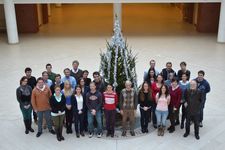
News
-
The Impact of Glutamine to Norleucine Substitutions in GNNQQNY Aggregation
We investigated the formation of amyloids in a known seven amino acid peptide (GNNQQNY). We modified the sequence slightly by replacing the amide group of the side chain involved in forming the resulting nano-sized structure with a group that is unable to form hydrogen bonds. This was achieved by replacing two glutamines (Q) with norleucine (Nle) one by one in two new syntheses. Although the two amino acids (Q and Nle) have the same chain length, they have very different chemical properties. The results showed that new twisted, filamentous nano-sized structures were obtained. Additionally, depending on which glutamine (Q) was replaced, a different twist direction (polymorphism) was observed. These structures could be 'photographed' using atomic force microscopy (AFM), as well as optical spectroscopy methods (ECD, VCD).
Structural Insights Into Amyloid Polymorphism: The Impact of Glutamine to Norleucine Substitutions in GNNQQNY Aggregation
These results may be of interest from a materials science point of view, for example in the development of amyloid catalysts, as we were able to produce nanoscale 3D structures reproducibly. -
Unveiling the Oxazolidine Character of Pseudoproline Derivatives by Automated Flow Peptide Chemistry
Pseudoproline derivatives, like Thr(ΨPro)-OH, are utilized in peptide synthesis to minimize peptide aggregation and aspartimide formation, but they may induce notable side reactions, particularly under elevated temperature and pressure.This study explores the oxazolidine moiety's behavior and proposes mechanisms to mitigate these side reactions, offering a thermodynamically controlled solution to aspartimide formation.
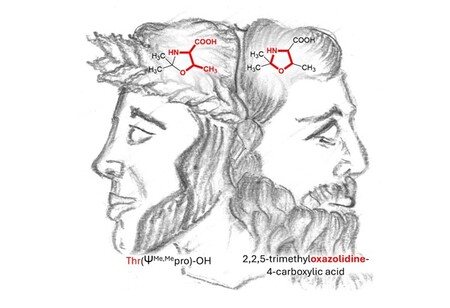
-
Intramolecular Inhibition by Imidazole in Acid-Catalyzed Hydrolysis of Protected Carbohydrates
The study uncovers an anomaly in the acid-catalyzed hydrolysis of the 5,6-O-isopropylidene group in specific D-gluco- and D-allofuranose derivatives, linked to C3-epimers with 3-O-imidazole sulfonyl moieties. Advanced modeling reveals how interactions between protecting groups and steric effects inhibit this reaction, providing new insights into carbohydrate chemistry.
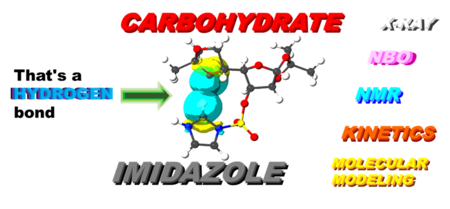
- Older news
Recent Publications
-
Fruzsina Bencs , Nóra Taricska , Zsolt Dürvanger , Dániel Horváth , Zsolt Fazekas , Vince Grolmusz , Viktor Farkas , András Perczel
Chemical Evolution of Early Macromolecules: From Prebiotic Oligopeptides to Self-Organizing Biosystems via Amyloid Formation
Chem. Eur. J. 31(29), e202404669 (2025) Kivonat -
Fruzsina Bencs , Loránd Románszki , Viktor Farkas , András Perczel
Structural Insights Into Amyloid Polymorphism: The Impact of Glutamine to Norleucine Substitutions in GNNQQNY Aggregation
Chem. Eur. J. 31 (26) e202404255 (2025) Kivonat -
Soma Varga , Bálint Ferenc Péterfia , Dániel Dudola , Viktor Farkas , Cy M. Jeffries , Perttu Permi , Zoltán Gáspári
Dynamic interchange of local residue–residue interactions in the largely extended single alpha-helix in Drebrin
Biochem. J. 482(08), 383–399 (2025) Kivonat -
Szebasztián Szaniszló , Imre G. Csizmadia , Imre Jákli , Viktor Farkas , András Láng , Máté Sulyok-Eiler , Veronika Harmat , István Pintér , András Perczel
Intramolecular Inhibition by Imidazole in Acid-Catalyzed Hydrolysis of Protected Carbohydrates
Chem. Eur. J. 31(15), e202403319 (2025) Kivonat -
Fruzsina Pilhál , Imre Jákli , Ernő Keszei , András Láng , András Perczel
Kinetic, thermodynamic, and ab initio insights of AsnGly isomerisation as a ticking time bomb for protein integrity
Commun Chem 7, 303 I DOI: https://doi.org/10.1038/s42004-024-01374-1 (2024) Kivonat - More publications
